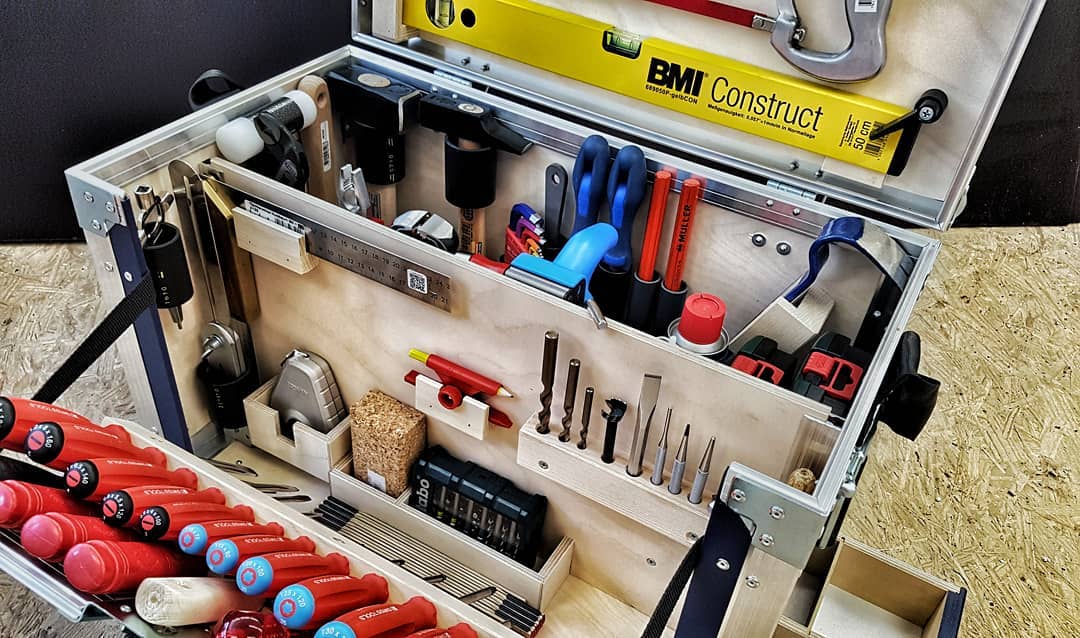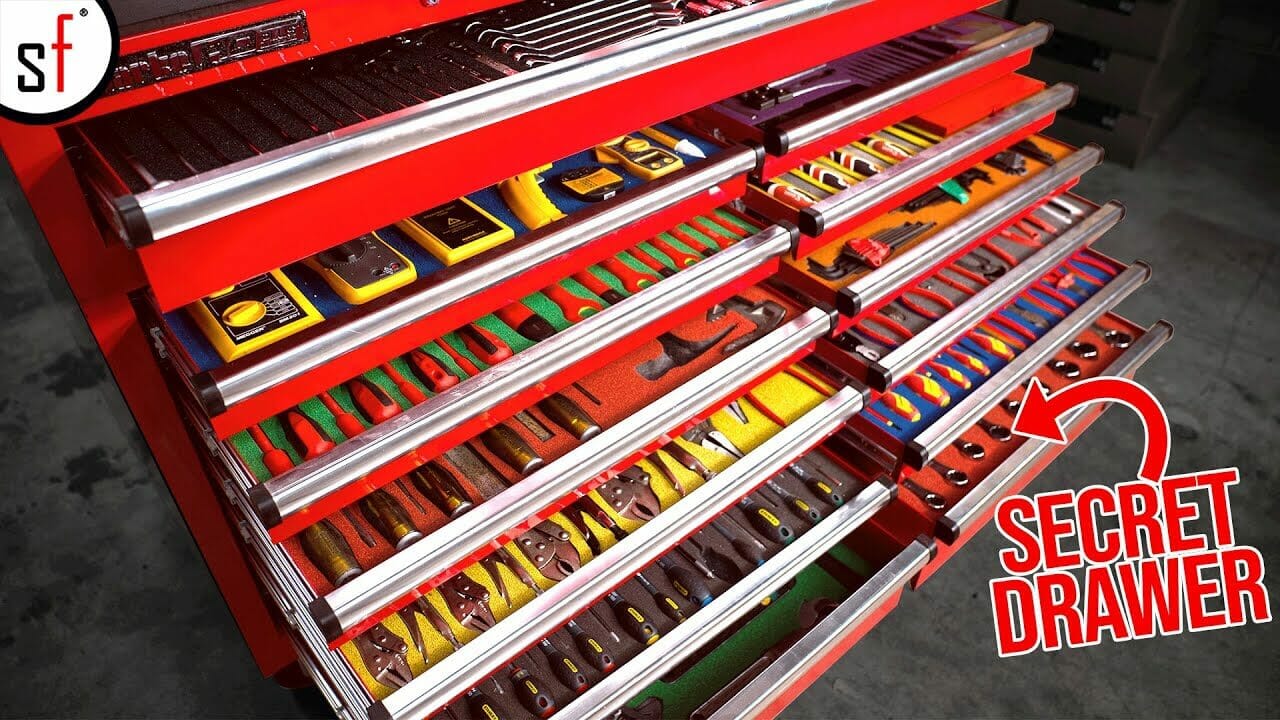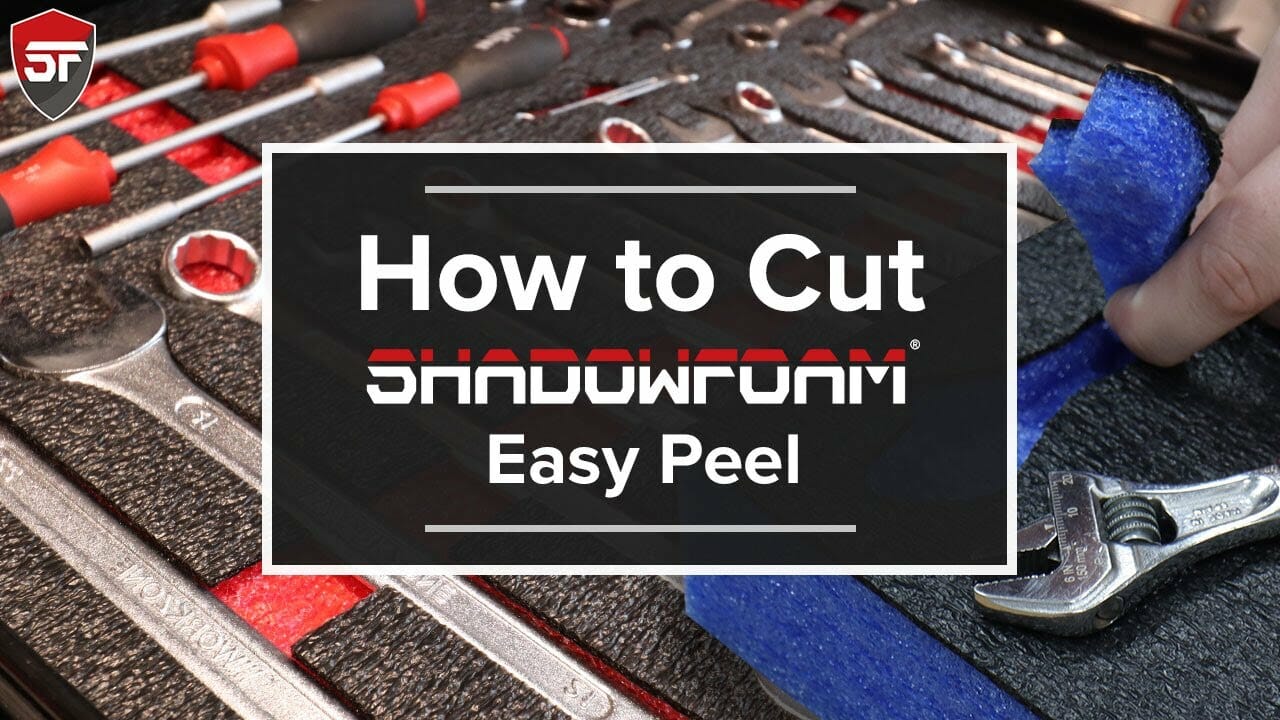How to Organize a Tool Chest to Skyrocket Your Productivity
Frustrated by the chaos inside your tool chest and struggling to find the right tool when you need it most?
In a Nutshell:
Start by emptying and categorizing all tools: group heavy-duty power tools, hand tools, accessories, and measuring tools separately. Clean each tool and the chest thoroughly. Use compartments with clear labels for small items like screws and nails. Allocate tools based on frequency of use and weight: heavy tools in bottom drawers, medium-sized ones in the center, and light equipment on top. Consider using tool organizers like foam inserts and stack-ons for better arrangement. This systematic approach saves time, prevents tool loss, and maintains order in your workspace.
Why Organize Your Tool Cabinet?
If you have a large and messy tool chest with all of the different types of screwdrivers and whatnot, an A-to-Z drawer organization process can seem overwhelming.
Setting aside a couple of hours for this project might appear like an enormous investment of time and work. However, an organized tool chest will save you time, energy, and even money in the long run.
With a well-organized tool chest, you can:
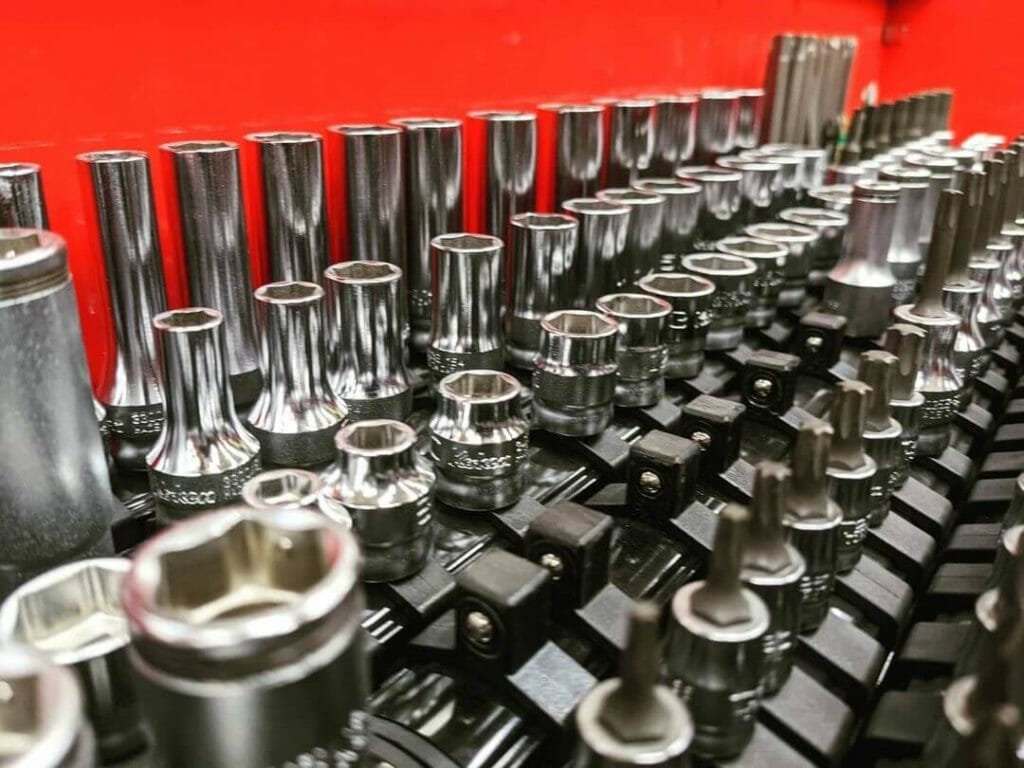
How to Start with Tool Box Organization
Organizing tool chests begins with emptying every drawer and compartment of their tools and equipment.
Lay out the tools on a large surface, such as a desk, workstation, or the floor. If your tools are especially dirty or greasy, you might want to line the surface with old newspapers first.
Essential Tools Breakdown: Applications and Insights for Homeowners
| Tool Group | Examples | Applications | Pros | Cons |
|---|---|---|---|---|
| Heavy-duty Power Tools | Drill, powered screwdriver, chainsaw, rotary tools | Used for major construction and renovation projects | Great for heavy-duty tasks, save time and effort | Require maintenance, can be expensive |
| Smaller Tools | Hammers, pliers, metal files, chisels, hand screwdrivers, hex keys | Ideal for everyday fixes and detailed work | Versatile, essential for basic toolkit | May need regular replacement or sharpening |
| Accessories | Drill bits, screws, cutters, hole saws, sockets | Critical for the functioning of power tools and detailed tasks | Enhances functionality of tools, provides versatility | Can get lost easily, need proper storage |
| Supplies | Sandpaper, duct tape, copper wire, electrical tape, cable ties | Essential for repairs, binding, and minor adjustments | Multipurpose, indispensable for quick fixes | Finite usage, require replenishment |
| Measuring Tools | Measuring tape, calipers, levels, level finders | Crucial for precision in construction and DIY projects | Ensures accuracy and consistency in measurements | Accuracy depends on quality and proper usage |
Note: Creating an inventory helps you stay organized and identify broken, redundant, or impractical tools. Discard irreparable items and consider donating those that are usable but unnecessary for you.
Clean Your Tool Chest Drawers
Once you’ve decided which items you want to keep, give your tool chest and equipment a thorough cleaning.
Such a cleaning can be a daunting prospect if you have a long-time buildup of dirt and grease. Heavy-duty cleaning wipes will help you with this task.
Be sure to go over and scrub all your tools and every nook and cranny of your tool chest drawers. It will help you keep all your equipment in good condition and cut down on repairs.
Organization Methods For Tools
Once you’ve got the sorting and cleaning out of the way, it’s time for the main task of optimizing your tool storage.
Tool organizers can be a saving grace, especially so if you’ve got a range of different types of hammers and hand tools to prioritize for. Read on and take note!
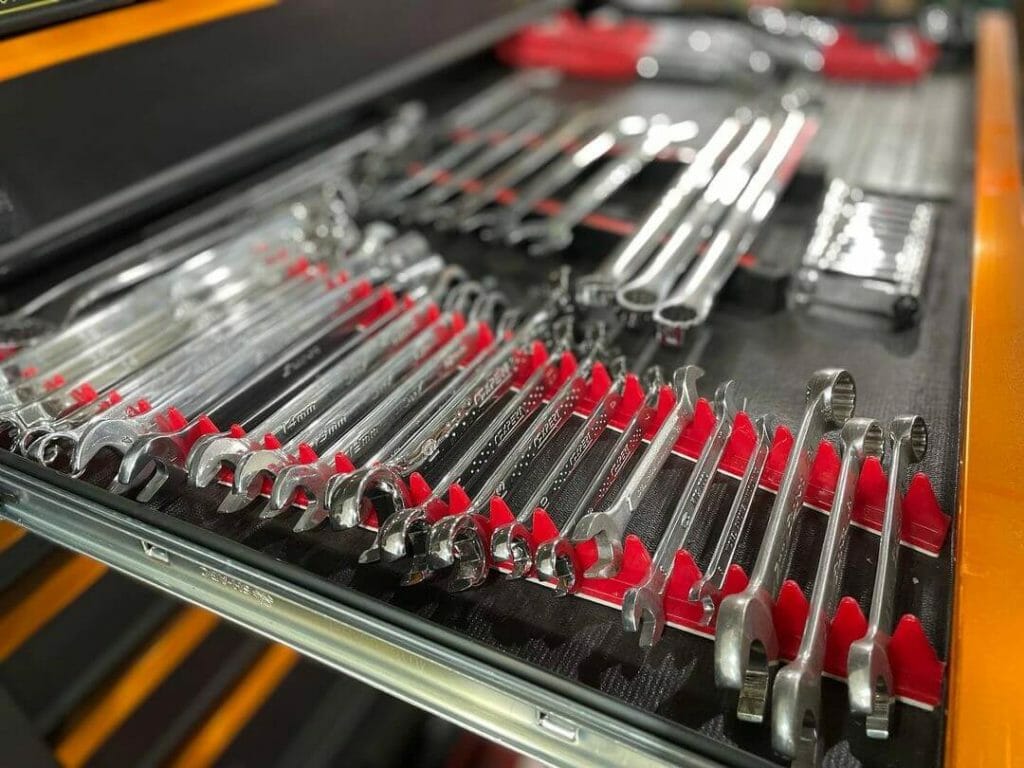
Same-Tool Sets
It makes sense to keep each toolset in one place: a screwdriver or drill and all its bits, oscillating tools and all their attachments, and so on.
Compartments with Labels for Small Items
Sort all your screws, nails, nuts, etc., by type and size. Place each one in an individual small container.
It is best to label them for convenience: clear labels make it much easier to locate the right type of screw or nail. A label maker can help you label more effectively.
Top, Center, and Bottom
Effective tool organization strongly depends on individual storage needs. Some people believe that the center drawers should contain the most frequently used items for convenience, while others prefer to sort their tools and equipment strictly by size and weight.
Although various systems can work well for different people, the following top-to-bottom method usually makes sense:
| Drawer Location | Ideal for | Pros | Cons |
|---|---|---|---|
| Bottom Drawers | Large, heavy tools like drills, oscillating saws, powered jigsaws, electric chainsaws | Provides stability to the tool cabinet by storing heavier items at the bottom | Can be hard to reach for smaller, frequently used items if placed at the very bottom |
| Center Drawers | Medium-sized tools and toolsets like pliers, hammers, hand screwdrivers, nail and screw containers | Easily accessible for frequently used medium-sized tools and toolsets | Can become cluttered if not organized properly, mixing different types of medium tools |
| Top Drawers | Lighter equipment like sandpaper, duct tape, copper coil, sockets, reusable consumables | Ideal for storing light items that are often needed and should be quickly accessible | Risk of overloading with small items, making it difficult to find specific items quickly |
Note: Assembling and maintaining a tool chest is that regularly organizing and cleaning your tool chest not only prolongs the life of the tools but also significantly enhances efficiency and productivity in both professional and DIY projects.
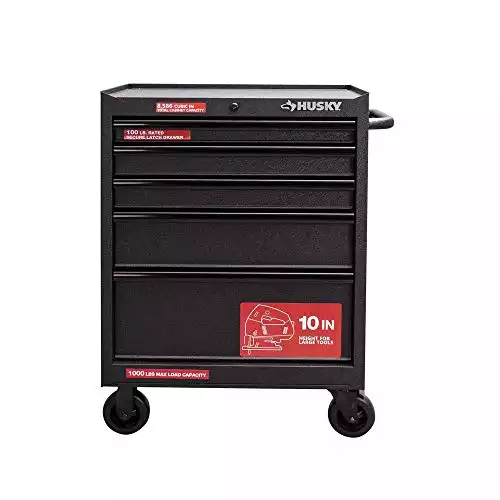 Husky 27" 5-Drawer Roller Cabinet Tool Chest
Husky 27" 5-Drawer Roller Cabinet Tool Chest
- Super convenient 5-draw tool chest equipped with lockable wheels yet can be easily relocated thanks to its portable design features.
- Perfect for a garage setup or new home workshops as this tool chest can fit snugly into smaller spaces, yet can still hold a capacity of 1,000 lbs.
- A top-notch tool chest engineered to the highest of standards with an all-welded steel construction showcasing a textured powder paint finish.
- Fitted with fully extendable deep roll-out drawers that will allow you to access tools in a hurry without having to dig around blindly.
Useful Tool Storage Accessories and Products
There are some great products to help you achieve a better-organized setup for your tools.
Stack Ons
Plastic stack-ons are convenient additions to your toolbox drawers. Stack-ons allow you to divide one wide drawer into smaller, more convenient compartments.
This makes storing large tool kits and different accessory types much easier. You’ll be surprised to discover how much more efficient a toolbox organization can become with a clever stack-on system.
Tool Foam
Foam tool box organizers can revolutionize your tool storage. With a foam liner or foam organizers, you can create individually customized foam organizers to suit your preferences and avoid an unsightly, confusing jumble.
Plan the layout according to your drawer dimensions and tool usage.
Most foam organizer kits use two layers of foam colors: a dark one and a lighter, brighter one. The double two-colored foam layer allows you to create convenient, easily visible nests for all your tools. This way, whenever something isn’t in its place, you’ll notice it at once.
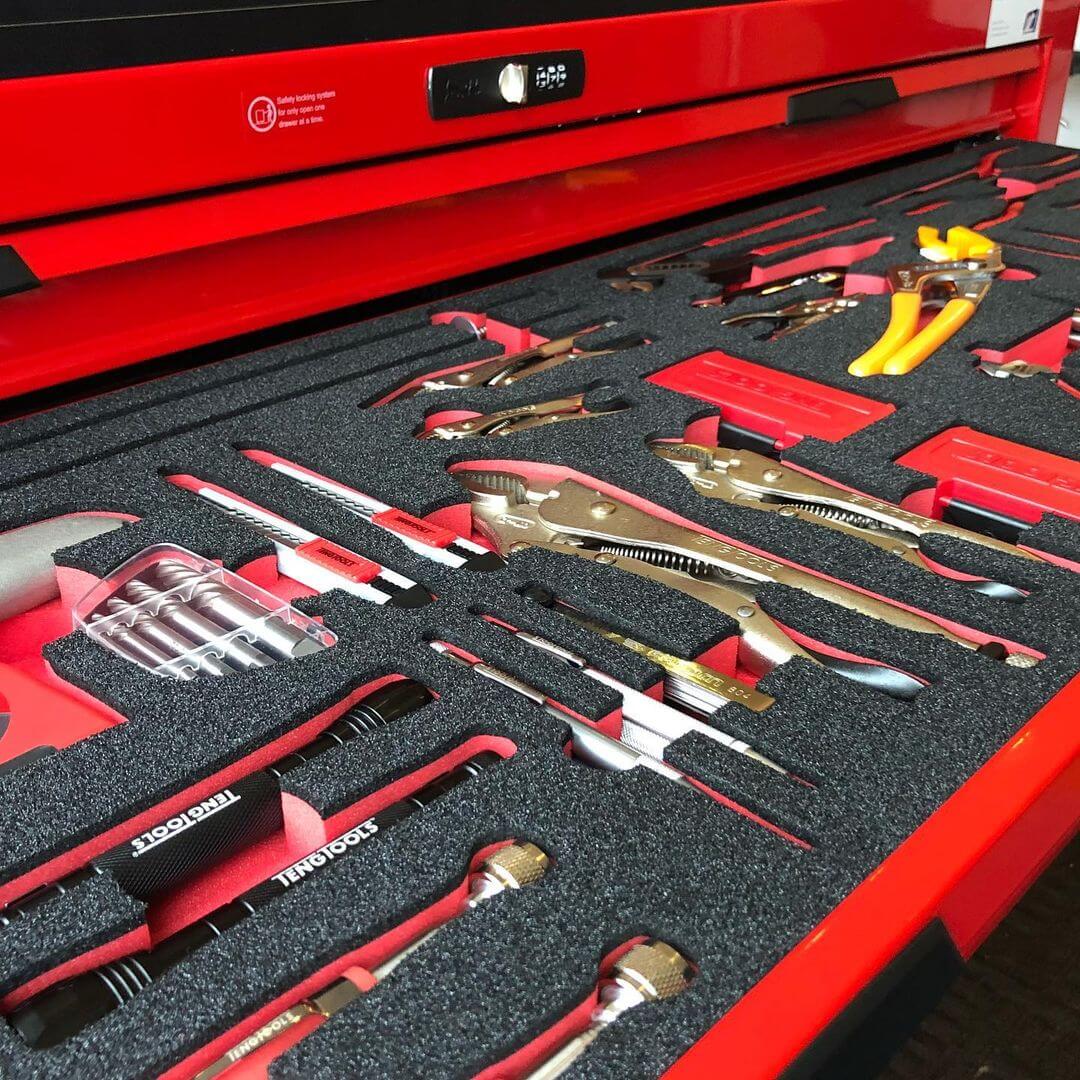
How to Make Tool Box Foam Inserts From Scratch
Trace each tool with a pencil and cut it to shape. Usually, a simple utility blade will cut the foam easily enough.
A specialized foam hot knife will give more precise results with thick foam, which you might want to use for larger, heavier tools.
Here are some handy tips for working with tool foam:
Foam is highly versatile. After you cut up the large sheets, you can use foam scraps as dividers in a toolbox. Another great idea is to cut slits in a foam strip and use it as an upright organizer.
Pegboards
If your tool chest is large enough, you could benefit from using a pegboard that attaches to your wall. You can organize a pegboard to maximize your productivity, plus your workshop or garage will look the part.
Pegboards are great for storing lightweight tools, cords, and some random accessories.
You can use a commercial pegboard from the hardware store or make your own with affordable plywood backing.
Be sure to secure the pegboard well and space them out enough so that the stored items don’t bump into each other and are easy to remove and replace.
Pegboards can also give you extra storage space when affixed to a garage wall.
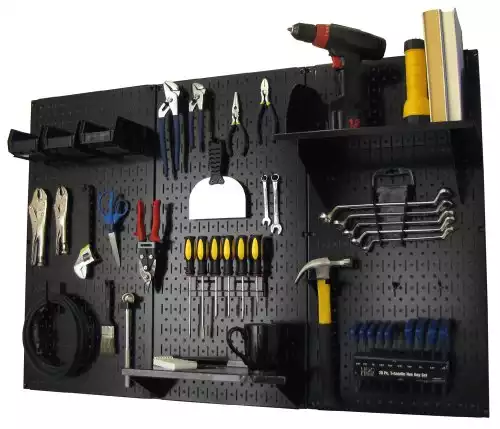 Pegboard Tool Organizer & Storage Kit
Pegboard Tool Organizer & Storage Kit
- All metal construction pegboard is both practical and durable as it is 10 times stronger than a conventional pegboard.
- This pegboard allows you to store an array of tools and equipment as it accepts conventional 1/4-inch pegboard pegs and accessories.
- Simple installation and setup by fixing the pegboard directly into studs or sheetrock with no framework being required.
- A brilliant addition to any workshop that will declutter your workspace and will look super cool on your wall with its black powder-coated finish.
Heavy-Duty Tool Rack
A heavy-duty tool rack is useful for securing metal tools and accessories such as shovels, garden rakes, and even step ladders. Typically, they are ideal for storing larger tools that you frequently use but don’t need protection from environmental factors.
If you have a metal tool chest, a tool rack can free up a lot of space for whatever needs a permanent home. This will allow you can store your more expensive items in a secure lockable toolbox.
A tool rack is super easy to install and inexpensive. You can space out your screwdrivers, wrench sets, and sockets in your tool chest and keep less expensive items such as garden tools on a rack like this.
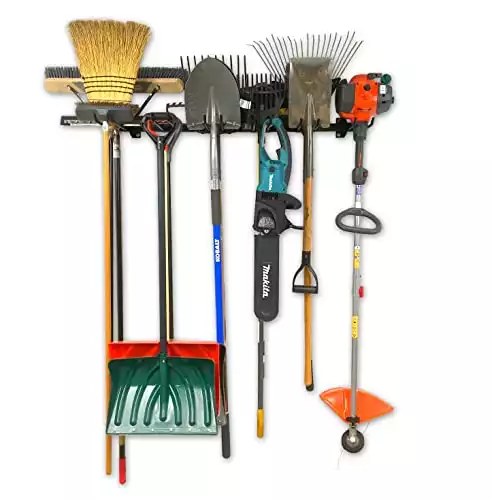 StoreYourBoard Tool Storage Rack
StoreYourBoard Tool Storage Rack
- Perfect for storing bulky garden tools as this rack can hold up to 300 lbs of weight with up to 6 storage attachments, both 11" long and 2" wide.
- Utilizes an adjustable wall track system up to 46" long and can be customized to hold various tools or even larger items like step ladders.
- Makes use of a locking pin system to safely store heavy tools safely and securely, potentially preventing tripping hazards.
- Quality heavy-duty garden tool rack made from alloy steel with a powder coated finish yet a great cost-effective space-saving option.
Socket Organizers
A socket organizer can help you efficiently organize sockets in your toolbox. Convenient snap-on socket holders come in various sizes and capacities.
Most full sets can hold between 60 and 80 sockets, although depending on the industry you’re in, you’ll likely have to collect larger sockets outside of what comes with a typical socket set.
The best tool organizer sets of this type are made of aluminum and durable plastic, or you can even get a specialist set molded from a 3D printer.
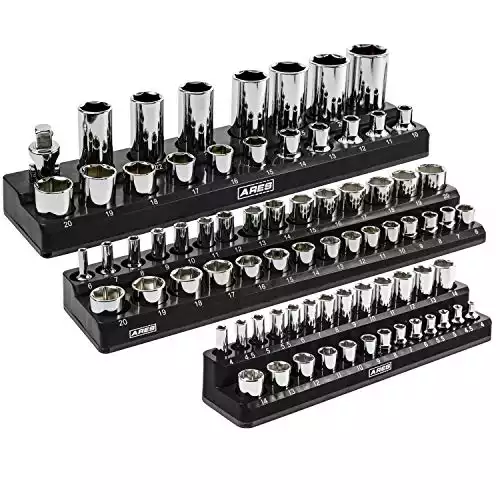 ARES Metric 3-Piece Magnetic Socket Organizer Set
ARES Metric 3-Piece Magnetic Socket Organizer Set
- Never lose track of another socket and vastly increase your productivity by grabbing sockets from one highly organizer tool chest.
- Give all of your expensive sockets a permanent home, housing sockets from 4mm all the way up to 27mm in a magnetic socket holder.
- These portable socket holders are made from heavy-duty, high-impact plastic and feature powerful magnets to hold your sockets in place.
- You can stick these magnetized socket holders to the side of your toolbox or any other ferrous metal surface in your workshop.
Upkeep and Maintenance
Have you put your tool chest in proper order? Great! Now you just need to keep it up. When you finish working on any DIY project, make sure to wipe the tools clean and replace them promptly.
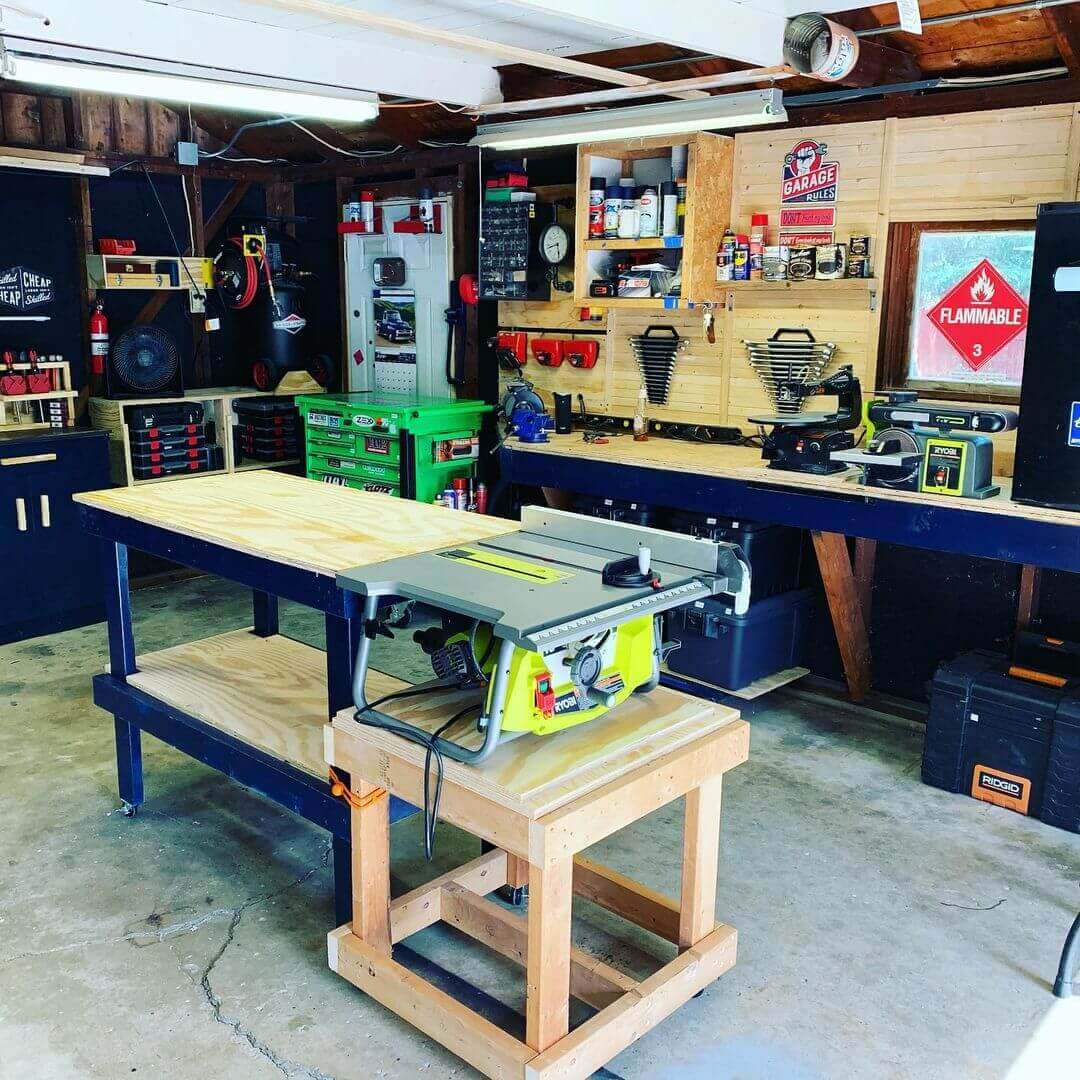
In Conclusion
Everyone benefits from better-organized tool chests. Safely storing the tools you’ll acquire on your journey as a craftsman, whether it be the different types of saws or drills, will no doubt fast-track your overall success.
Key Takeaways:
Hopefully, this detailed guide for increasing your productivity will reduce the amount of time your spend looking for an indispensable tool, fitting, or accessory during a project!

